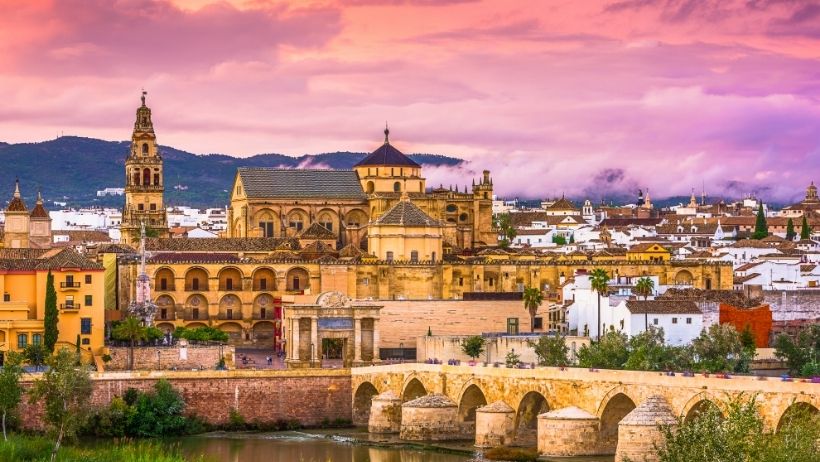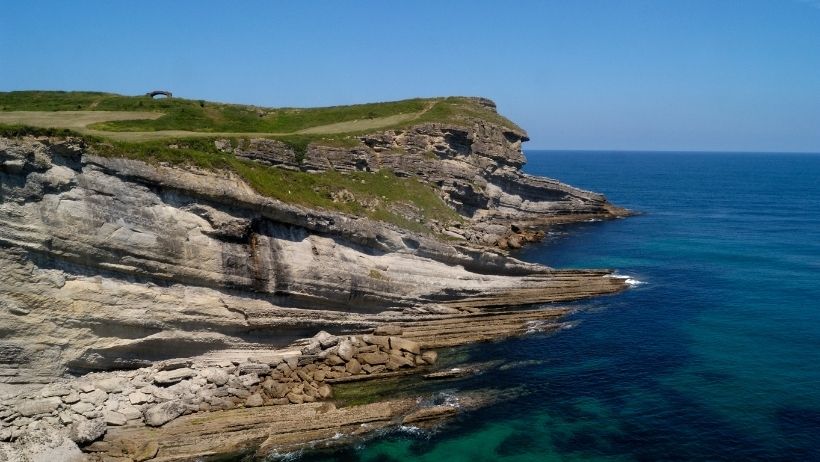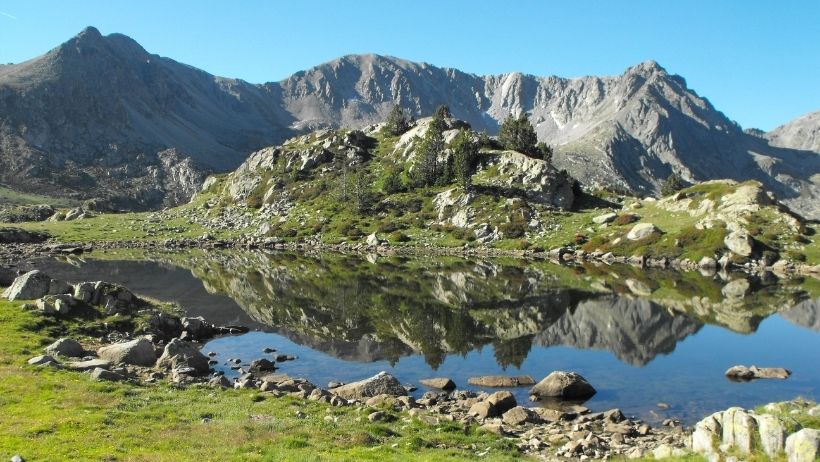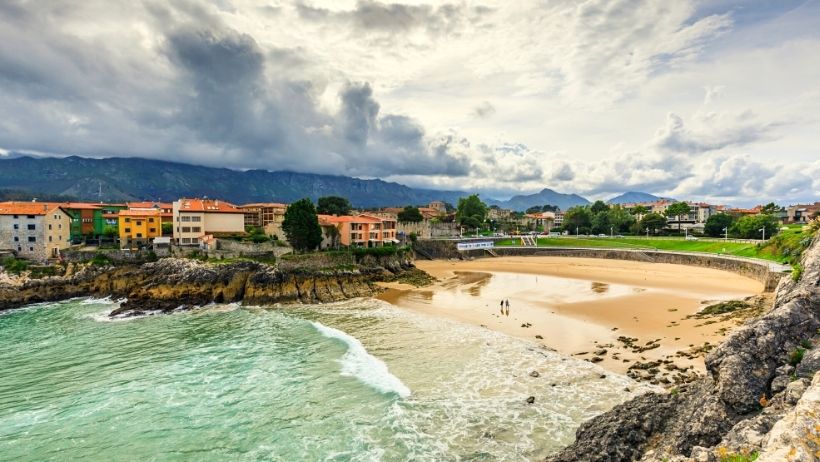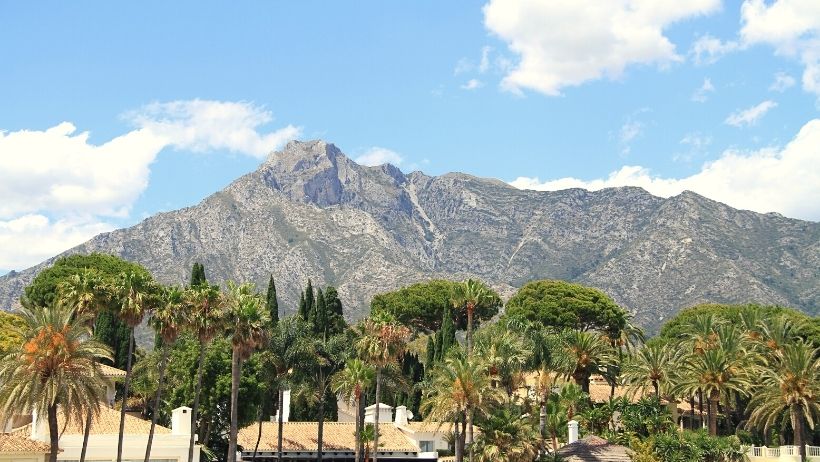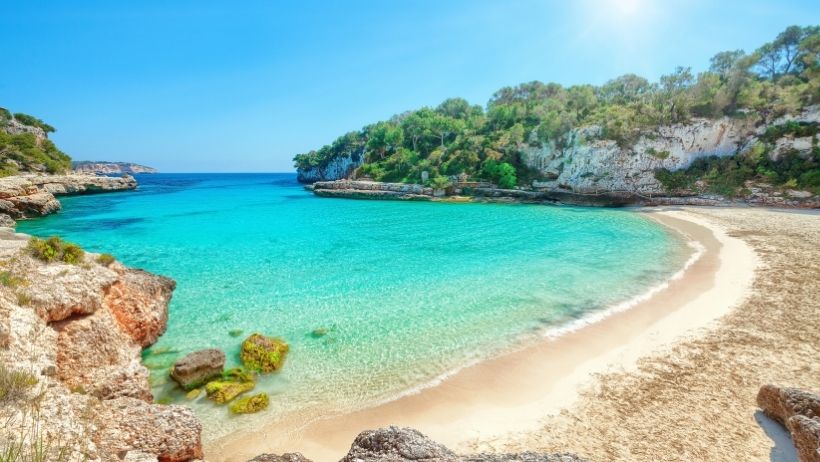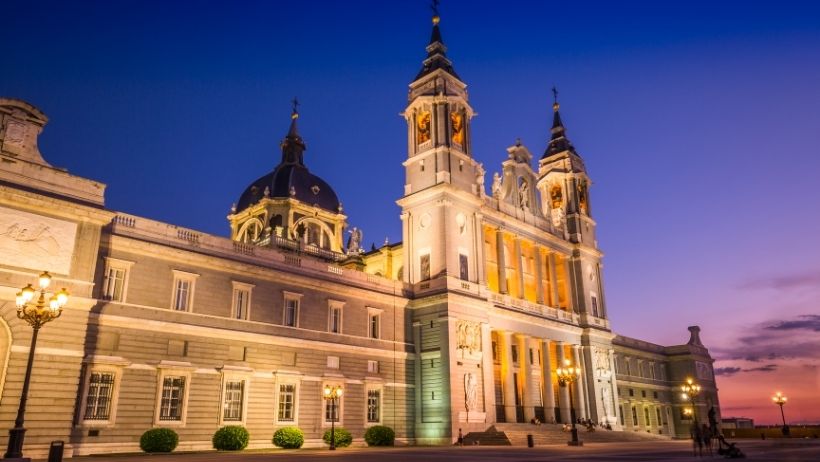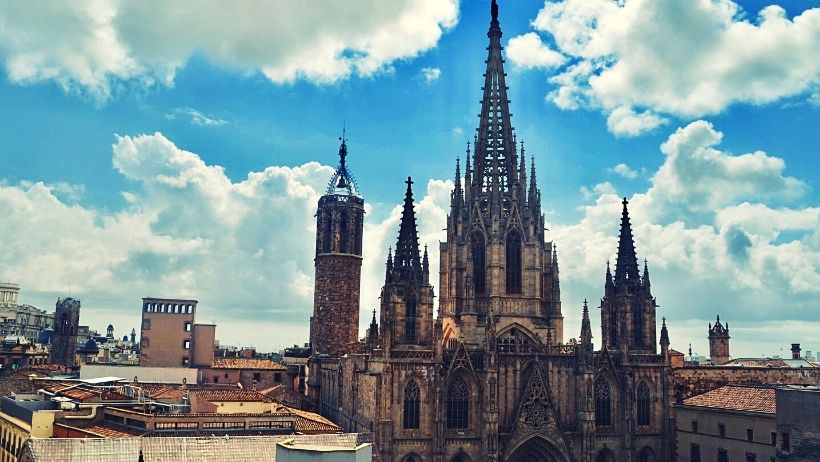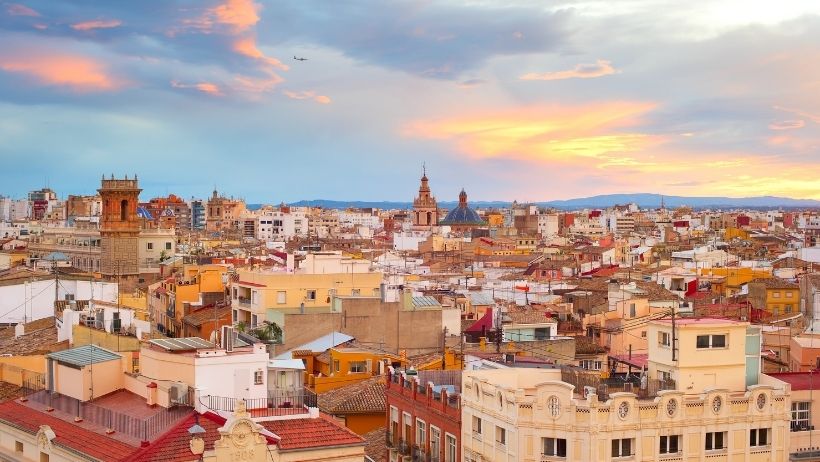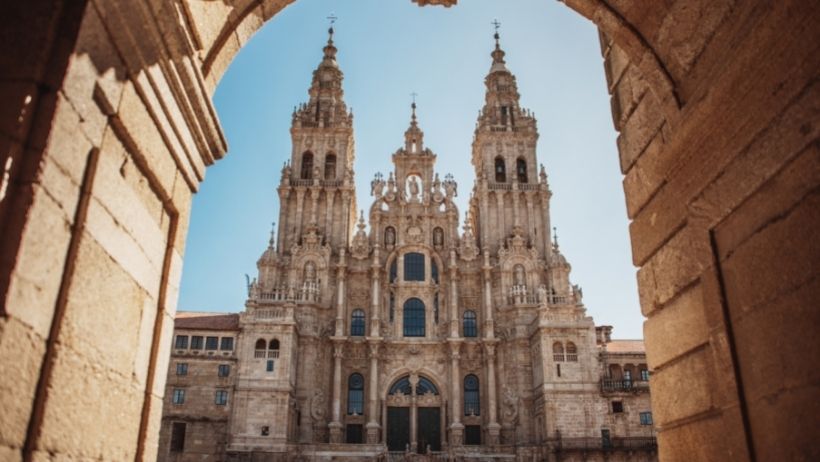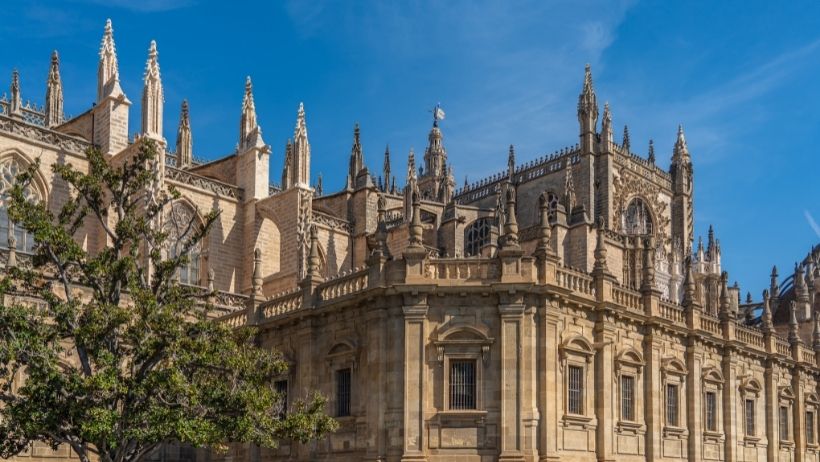Spain: Sight-Seeing, Customs, and Traditions
Year after year, Spain is one of the most visited countries in the world, which is no wonder given the diverse scenarios of high mountains, picturesque coasts, and lively cities.
In the summer holidays, many tourists are drawn to the beautiful Balearic island of Mallorca! But the country has much more to offer than “just” its famous Balearic Islands. For example, discover the vibrant capital of Madrid, follow in the footsteps of flamenco in regions such as Andalusia and look forward to numerous opportunities for a sunny holiday on the coasts such as the Costa Blanca.
On the Iberian Peninsula, there are a wide variety of holiday types. Solo travelers often long for adventurous hikes across the country, where highlights such as the Way of St. James or the Pyrenees should not be missing. Couples love city travel destinations such as Barcelona or Valencia, which offer a mix of romantic tradition and contemporary places to eat and drink. And for the whole family, a beach holiday that can be implemented at short notice in a child-friendly country is often the be-all and end-all. Have we awakened your desire to travel yet? We will show you which Spanish holiday destinations are just right for you!
Regions in Spain
There are 17 regions in Spain, we will go into the most worthwhile ones below. While Cantabria, Catalonia, Asturias, and Andalusia beckon on the mainland, vacationers in the Mediterranean are drawn to the Balearic Islands and in the Atlantic to the Canary Islands.
Cantabria
To the west of the Basque Country, Cantabria is located on the Bay of Biscay and impresses its visitors with rugged cliffs, high mountains, and picturesque glacial lakes. Dense forests and deep gorges inspire nature and hiking enthusiasts, while beach holidaymakers are drawn to the Atlantic coast, where, among other things, quaint fishing villages await. The capital Santander invites to sightseeing tours.
Catalonia
In contrast to Cantabria, Catalonia in the southeast of Spain is known to many more holidaymakers. Most of them are drawn to the Mediterranean coast for the beautiful beaches or to the capital Barcelona, neglecting the hinterland. There you can go hiking in the Pyrenees, for example. In this context, it is worth considering visiting the miniature state of Andorra.
Asturias
Like Cantabria, Asturias is located on the Bay of Biscay in northern Spain. The landscape is characterized by green valleys, high peaks, sandy beaches, and idyllic villages, so that one or the other of you will surely get the wanderlust. The tasty cuisine makes Asturias perfect as a pleasure region. Be sure to try some cider, seafood, and cheese.
Andalusia
In the very south of the country is the region of Andalusia, which is responsible for many “typical Spanish clichés”. Flamenco, among other things, originates here and the Spanish locals in the region know how to celebrate a fiesta! City breaks will feel at home in Seville with its Moorish-influenced architecture and the city of Marbella as a popular luxury destination, while in cities like Almería sights such as an old, historic fortress from the tenth-century lure.
Balearic Islands
The Balearic Islands with islands like Mallorca are a particularly popular travel destination, especially in summer. In addition to classics like the Ballermann, there are also quieter places on the island where you can play golf or hike in peace. Ibiza is often flown to by holidaymakers who want to have a good time on the beach and listen to hip, international DJs. If there is too much going on in Mallorca and Ibiza, you will feel at home on the other Balearic islands of Menorca or Formentera.
Canaries
The Canary Islands are waiting for you in the North Atlantic. After about five hours of flight, you have reached a place where there is something like eternal spring. As a result, you can still count on pleasant temperatures even in winter and nothing stands in the way of a swim in the sea. Nevertheless, the Canary Islands are also different from each other. For example, on Fuerteventura or Lanzarote, it is comparatively sparse in contrast to La Gomera or La Palma.
Cities in Spain
Culture vacationers don’t miss out in Spain, as you will quickly find out when traveling to Madrid, Barcelona, Valencia, or Seville. We introduce you to the four largest cities in the country.
Madrid
The Spanish capital, with its 3.2 million inhabitants, is located in the heart of Spain, on the Castile plateau. Sights include the Royal Palace, the Plaza Mayor, and the Museum Triangle. Football fans have the option of watching a Real Madrid game at the Estadio Santiago Bernabéu.
Barcelona
When you think of Barcelona, the first thing you think of is the Sagrada Família and various other buildings by Gaudi, including Casa Batlló and Casa Milà. When in the Catalan capital, don’t forget to stop by the Barri Gòtic (Old Town) with its Cathedral and Plaça del Rei (King’s Square). A stroll along the promenade La Rambla leads you straight to the port and from there it is not far to the beach.
Valencia
The third-largest city in Spain is Valencia, the capital of the Valencian Community. If you hear words here that differ from your knowledge of Spanish, it is because Valencian is also spoken in and around Valencia. Sights include, for example, the Plaza de la Virgen, where some historic buildings such as the city’s Cathedral or Balika stand.
Seville
According to Greek mythology, Seville was founded by Hercules. The capital of the Andalusia region is impressive, with architectural highlights such as the Alcázar Palace with its pretty gardens, the Plaza de España, and the city’s impressive cathedral awaiting you. Furthermore, Seville is considered one of the cradles of flamenco, and bullfighting is also very important here. After Madrid, the Andalusian capital has the second-largest arena in the country.
Coastal
Spain is blessed with several evocatively named coastlines. Convince yourself whether they keep what they promise. The Catalan Costa Dorada (“Golden Coast”) is a popular Mediterranean beach scenario. The name of the coast already reveals the wonderful views that await you. Rugged rocks are characteristic of Catalonia’s Costa Brava (“Wild Coast”). On this stretch of coast, there are beaches and challenging hiking trails for an active holiday in nature.
On the Costa Blanca (“White Coast”), located in the Valencian Community, white beauties of pebbly beaches and soft sand can be found. The Blue Flag distinguishes many of the coveted bays. And Costa del Sol? It shapes the picture in Andalusia and enchants holidaymakers with the finest sandy beaches, among other things!
Landmarks
Fantastic prospects for everyone who is particularly looking forward to sightseeing on holiday: in many Spanish cities there is one building worth seeing after the next. Find highlights such as castles and fortresses that give you a deep insight into Spain’s eventful history.
Place of pilgrimage Santiago de Compostela
The pilgrimage site of Santiago de Compostela in northern Spain presents itself as one big attraction. It is a place frequently visited by believers from all over the world and is home to more than 20 places of worship and several monasteries. The biggest attraction is the city’s cathedral, which is even a UNESCO World Heritage Site. Santiago de Compostela is also the destination of the Way of St. James in Spain.
Church buildings
Barcelona’s landmark, the Sagrada Familia, is one of the first to be mentioned here. It dates partly from the 19th century and is still under construction. Towers of up to 172 meters high reach into the sky.
The largest Gothic church in the world, on the other hand, awaits you with the Santa Maria de la Sede in Seville. And the cathedrals of Burgos and Toledo will also appeal to architecture enthusiasts.
Castles, fortresses & palaces
Various forts can be seen in many Spanish towns. An unmissable highlight is the Moorish-style Alhambra, one of the most visited attractions in all of Spain. It towers above the Andalusian town of Granada on a mighty hill, framed by green forests.
In Seville, too, you can walk in the footsteps of the past: the royal Alcázar, some of which dates back to the 11th century, is not only a real must-see from the outside. Inside, for example, there are richly decorated rooms such as the Salón de Embajadores. The third stop on a sightseeing tour around castles and palaces should be the Alcázar de Segovia. The castle originally dates back to the 11th century, but has been destroyed and rebuilt over time.
Activities
What can you experience on holiday in Spain? A lot! And that certainly doesn’t end with sightseeing tours. Instead, we have many more tips here that always spice up a trip with knowledge, relaxation, or thrills.
Visit museums
Logically, with such a variety in Spain, the museums also score! In addition to places of knowledge that take you into the past of the respective cities and regions, there are numerous museums for art lovers. The Prado in Madrid is one of the most famous art museums in the world and exhibits works by artists such as Van Dyck, Picasso, and Rembrandt. Painting and science, on the other hand, come together in Valencia, the City of Arts and Sciences. For example, visit the natural science museum or a huge aquarium. In Catalonia, the Dalí Theatre-Museum complements the picture via the artist of the same name.
Take a beach vacation
A beach holiday is possible along the coastal regions that we have presented to you in detail, as well as on the Balearic or Canary Islands. The latter is ideal for snorkeling because a colorful underwater world with a large variety of marine animals and plants awaits you. You can also surf there under good conditions. Party holidaymakers cannot avoid Ballermann on Mallorca, while the golden sandy beaches of Andalusia, for example, are just the thing for a family holiday.
Hike
Hikes in Spain serve all fitness levels! Real challenges are possible in the Pyrenees. While relaxed walks through beautiful Mediterranean landscapes can also be part of the agenda on the Balearic island of Mallorca. A special feature is the Way of St. James, which runs across northern Spain.
There are also pretty hiking trails around the capital Madrid – or you can explore the Basque country to the north with largely untouched nature. Of course, excursions along the coastal paths are also possible, perhaps in direct connection with a beach holiday?
Travel Info
If your heart already beats for Spain, it’s time to plan and visit all the beautiful sights and beaches. In the last part of our travel tip, you can read about what you should think about and what delicacies await you at the travel destination.
Travel time
Depending on where you spend your vacation in Spain, the recommended travel time differs. The Balearic Islands and the coastal regions on the Mediterranean Sea are great for a beach holiday between May and September. In the Canary Islands, it is usually warm enough for a beach trip all year round. Active vacationers who would like to hike should arrive in spring or autumn. Alternatively, you can focus on the north of Spain, which generally has slightly milder temperatures than the rest of the country. And for a sightseeing trip? You better avoid the high summer months of June, July, and August, because during this period it gets uncomfortably warm, especially in heavily built-up areas.
Getting there
The most popular way to get to Spain is by plane: there are airports in almost all regions of Spain, for example in Madrid, Barcelona, Alicante, and Valencia. The Balearic Islands are also easily accessible through airports in Mallorca, Menorca, and Ibiza. The Canary Islands have airports on each of the larger islands.
How to get around
Within Spain, buses are the most convenient way to get you from A to B. The train network is not quite as well developed as the bus network. Most air-conditioned intercity buses and coaches are made for longer journeys. An alternative for explorers who like to set their schedule is to rent a car. You can also book this on the islands.
Language & understanding
The national language here is Spanish. Better if you will try to learn some Spanish if you want to visit here. If you are not making progress with your Spanish, you should have an English dictionary ready. At least in the typical holiday areas, the English language is also well represented.
Customs & Traditions
In Spain, there is usually a siesta between 2 pm and 5 pm. This means that most shops and restaurants close, at least in the areas where there are fewer holidaymakers. In return, they spoil you with long opening hours well into the evening. The reason for the pause is the heat, which peaks during this period.
Food & Specialties
The anticipation of the holiday increases when you think of typical Spanish food. Delicious tapas, i.e. small appetizers that come in a variety of forms, characterize the picture, as does the famous paella dish. In the coastal regions, you will enjoy fish and seafood dishes.

